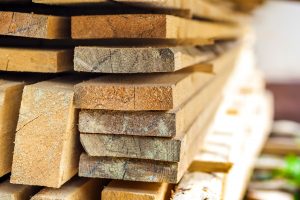Deciding When to Cull Lumber
As a contractor, you need to be able to recognize defects in lumber. A lumber yard should cull damaged wood before shipping it to your building site. This doesn’t mean that defective boards don’t get missed. You also need to recognize when you are being swindled.
Wood Defects
There are many types of defects in lumber that can affect its grade and what it can be used for. Some flaws make a piece of lumber unusable.
- Bow: The wood is warped on its face from end to end.
- Cup: This type of defect creates a hollow across the face of the board.
- Crook: The board is warped along the edge line.
- Knot: Although a tight knot is rarely a problem, a loose or dead knot may fall out. A dead or loose knot is typically surrounded by a dark ring. A board with too many problematic knots should be culled at the lumber yard
- Split: This usually happens at the ends of a board. It is a crack that goes all the way through a piece of wood.
- Twist: Numerous bends in a piece of lumber creates a problematic defect.
- Check: This is a crack the occurs along the timber’s growth rings. They don’t pass all the way through the lumber.
- Shake: This defect occurs when the grain separates between growth rings. They may extend along the board’s face or below the surface.
- Wane: This is where there is missing or untrimmed bark along the edge or corner of the lumber.
Culling Lumber
Although wood should be graded and picked through at the lumber yard, sometimes you need to cull a few pieces yourself. Some knots and cracks are okay and others create a problem. If the defect affects the structural integrity of the wood. Toss it.
As a contractor, take the time to understand the wood you are working with. That way, when you encounter a defective piece of wood, you can determine whether you can work with it or not.

